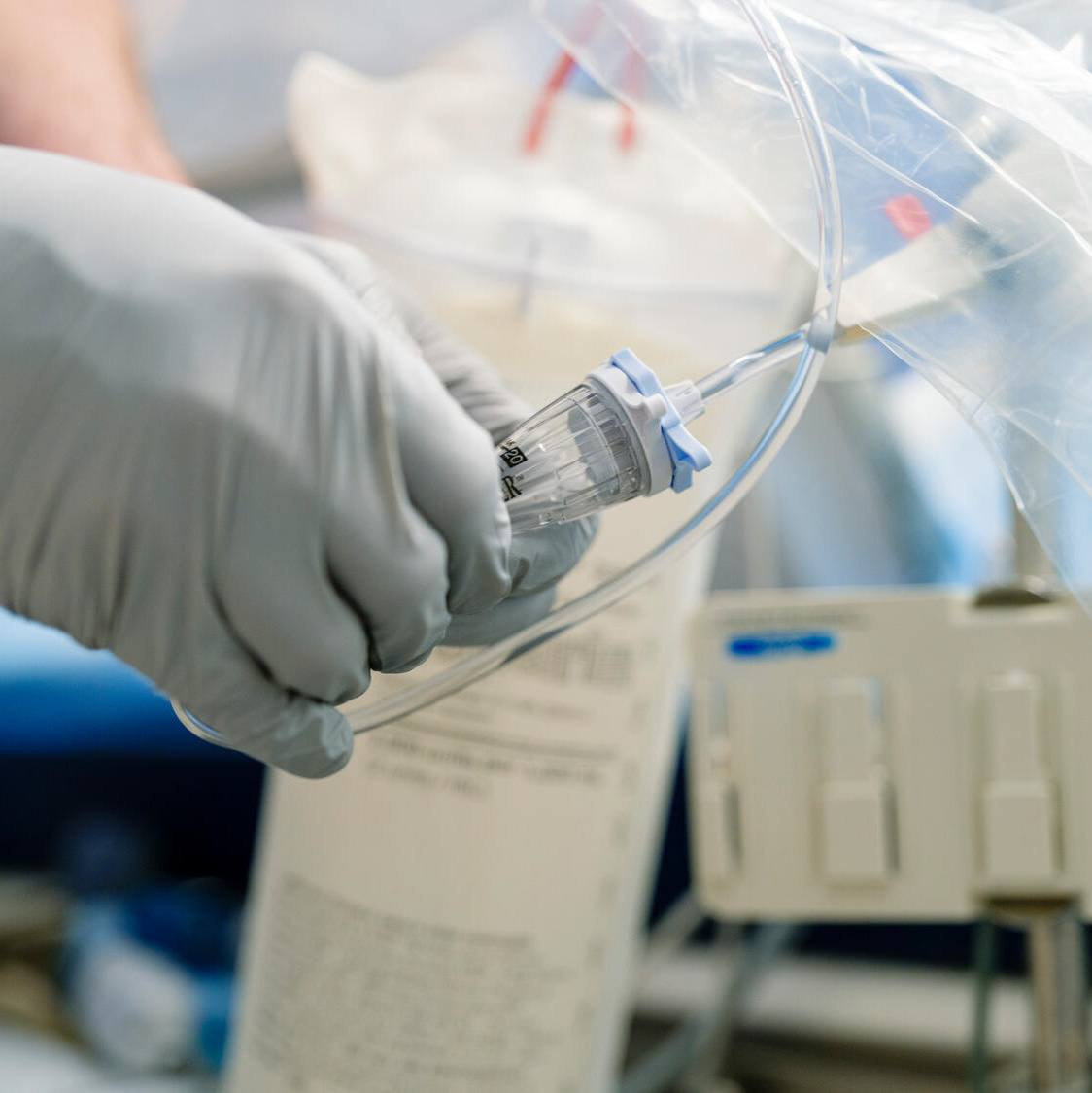-
Mayo Clinic Celebrates 1,000th Patient to Get Cochlear Implant
ROCHESTER, Minn. — Sept. 17, 2013 —For more than 30 years, cochlear implants have been making a profound impact in the lives of deaf or severely hard of hearing children and adults by restoring their ability to hear. The program at Mayo Clinic was one of the earliest in the country to offer cochlear implants to patients when they were first approved. This month, Mayo Clinic surgeons performed surgery on their 1,000th cochlear implant patient. The patient, a 44-year-old man from northern Minnesota, lost his hearing more than three months ago due to a medical condition; this week, he was able to hear sounds again.
MULTIMEDIA ALERT: Video and audio are available for download on the Mayo Clinic News Network.
"I think it might be impossible to overstate the profound impact that these devices have on people," says Colin Driscoll, M.D., an otolaryngologist at Mayo Clinic. "The first day you turn it on everyone is emotional. It's a scary time sometimes, but it's also an exciting time."
A cochlear implant is an electronic device that partially restores hearing in people who have severe hearing loss due to damage of the inner ear and who gain limited benefit from hearing aids. Many people have a cochlear implant, but you may not notice because they hear so well, notes Dr. Driscoll. The implant consists of a processor behind the ear that captures and processes sound signals, which are transmitted to a receiver that is surgically placed under the skin behind the ear. The receiver sends the signals through wires to the cochlea, then via the auditory nerve to the brain, which recognizes the signal as sound.
Once the implant is placed, the brain needs to learn how to hear with the device, says Dr. Driscoll. Patients return to see an audiologist to have it programmed about one to three weeks following surgery. At this appointment, patients may begin hearing sounds. It takes time for patients to get accustomed to the implant. They need to learn to interpret the sounds so they can understand speech, language and environmental sounds.
Cochlear implants benefit a broad range of people. The youngest patients may be 6 months old and the oldest patients may be in their 90s. Some patients may have been born deaf, while others may have become deaf or hard of hearing due to age, disease, trauma or a medical condition. Most people who have a cochlea and a hearing nerve can be a candidate for a cochlear implant.
Older adults often struggle for years with their hearing aids because it's scary for them to take the next step of a surgically implanted device, says Dr. Driscoll. He adds that after they take that step they commonly say, 'I should have done that years ago.' Millions of people worldwide are impacted by hearing loss or deafness, and most find that cochlear implants help them communicate better and improve their quality of life.
To interview Dr. Driscoll about cochlear implants or to interview a cochlear implant patient, please contact Kelley Luckstein atnewsbureau@mayo.edu or 507-284-5005.
###
About Mayo Clinic
Recognizing 150 years of serving humanity in 2014, Mayo Clinic is a nonprofit worldwide leader in medical care, research and education for people from all walks of life. For more information, visit 150years.mayoclinic.org, www.mayoclinic.org and newsnetwork.mayoclinic.org.







